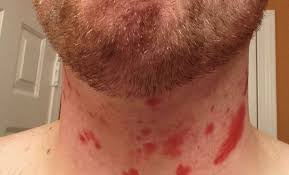Treating razor burn is often as simple as waiting it out and using gentle methods to reduce your symptoms. You should avoid shaving the affected area again to allow it to heal.
To soothe heat or itching: Applying a cool washcloth to the affected area can calm your skin. Aloe or avocado oil are both cooling and can be safely applied directly to the skin.
To relieve dryness or irritation: If symptoms are appearing, rinse your skin and pat it dry. Be careful not to rub the affected area, as this may further irritate the skin.
Once the skin is dry, apply an emollient. This may be a lotion, aftershave, or other moisturizer. Avoid products that contain alcohol because they can cause irritation. If you’d prefer to go the natural route, coconut oil may help hydrate your skin.
To reduce inflammation: When it comes to treating inflammation, you have your pick between home remedies and over-the-counter (OTC) options.
Popular home remedies include:
apple cider vinegar
equal parts tea tree oil and water
witch hazel extract
oatmeal bath for up to 20 minutes
If you prefer to go with an OTC option, look for a topical cream containing hydrocortisone. This can help reduce any swelling and calm any redness on the skin.
To treat small bumps: If you experience razor bumps, avoid shaving the affected area until any sores and bumps heal. This may take up to three or four weeks. In the meantime, you should use a topical cream like cortisone to treat any related inflammation.
If the bumps develop signs of infection, consult your doctor. Symptoms of infection include welts and pustules.
If the area is infected, your doctor will prescribe an oral antibiotic. Your doctor may also recommend products to prevent future razor burns or bumps. For example, you may be prescribed a product with retinoids to exfoliate your skin and reduce the buildup of dead cells on the skin’s surface.



 Contact Us
Contact Us







 Hospitals
Hospitals
 Doctors
Doctors
 Diagnostic
Diagnostic
 Pharmacy
Pharmacy
 Health Tips
Health Tips
 Blog
Blog

























Comments